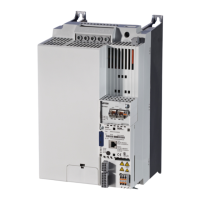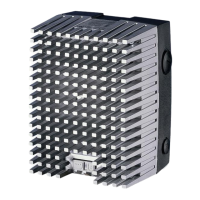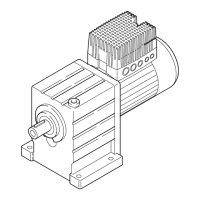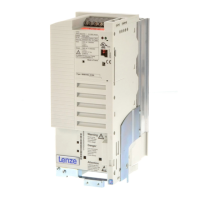Lenze · Decentralised frequency inverter 8400 motec (CANopen option) · EDS84DMOTCAN EN 4.0 - 02/2019 35
Data transfer
Structure of the CAN data telegram
_ _ _ _ _ _ _ _ _ _ _ _ _ _ _ _ _ _ _ _ _ _ _ _ _ _ _ _ _ _ _ _ _ _ _ _ _ _ _ _ _ _ _ _ _ _ _ _ _ _ _ _ _ _ _ _ _ _ _ _ _ _ _ _
7.1.1 Identifier
The principle of CAN communication is based on a message-oriented data exchange between a
transmitter and many receivers. All nodes can virtually transmit and receive simultaneously.
The identifier, also called COB-ID (abbr. for communication object identifier), is used to control
which node is to receive a transmitted message. In addition to the addressing, the identifier
contains information on the priority of the message and the type of user data.
The identifier consists of a basic identifier and the node address of the node to be addressed:
Identifier (COB-ID) = basic identifier + node address (node ID)
Exception:
The identifier for process data/heartbeat/emergency objects as well as network
management and sync telegrams is freely assigned by the user (either manually or automatically by
the network configurator), or is permanently assigned.
Node address (node ID)
For unambiguous identification, a node address (also called node ID) within the valid address range
(1 ... 63) must be assigned to every node of the system bus network.
• A node address may not be assigned more than once within a network.
• The own node address can be configured via the DIP switches or via code C00350
.
Setting the CAN node address
( 31)
Identifier assignment
The system bus is message-oriented instead of node-oriented. Every message has an unambiguous
identification, the identifier. For CANopen, node-oriented transfer is achieved by the fact that every
message has only one transmitter.
• The basic identifiers for network management (NMT) and sync as well as the basic SDO channel
(SDO1) are defined in the CANopen protocol and cannot be changed.
• In the Lenze setting, the basic identifiers of the PDOs are preset according to the "Predefined
connection set" of DS301, V4.02 and can be changed via parameters/indexes, if required.
Identifiers of the process data objects
( 48)
1) If you set the sync transmit/receive identifier manually, observe the use of the emergency telegram, since it has the same
COB-ID.
Object Direction Lenze-Base-ID CANopen-Base-ID
from device to device dec Hex dec Hex
Network management (NMT) 0 0 0 0
Sync
1)
128 80 128 80
Emergency
1)
128 80 128 80
PDO1
(Process data channel 1)
TPDO1
384 180 384 180
RPDO1
512 200 512 200
PDO2
(Process data channel 2)
TPDO2
640 280 640 280
RPDO2
641 281 768 300
SDO1
(Parameter data channel 1)
TSDO1
1408 580 1408 580
RSDO1
1536 600 1536 600
SDO2
(Parameter data channel 2)
TSDO2
1472 5C0 1472 5C0
RSDO2
1600 640 1600 640
Heartbeat 1792 700 1792 700
Boot-up 1792 700 1792 700
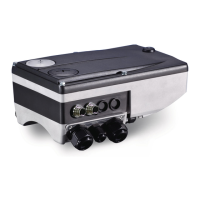
